Social Commerce in the West: Where has the “social” gone?
You won't argue with me: the range of e-commerce features on Facebook & Co. is growing at a vertiginous pace. Question: is it enough to establish their leadership in this area?
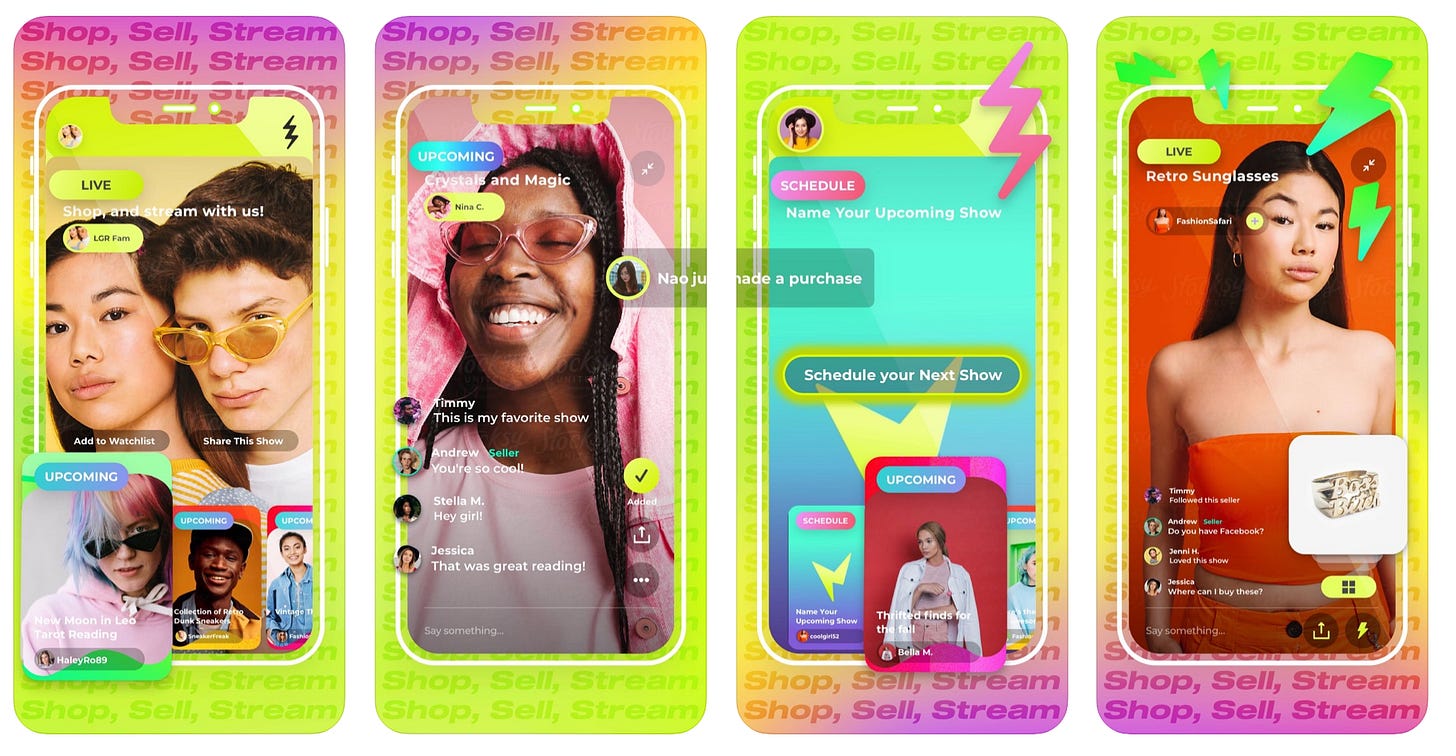
iPhone screenshots Popshop Live
Social Commerce or simply commerce that “is social”?
Here’s a not-so-simple question: what is social commerce? Often you will read that social commerce is "the act of selling products directly through social media platforms, whether you do it through posts, videos, comments, forums, or any other means” adding that "the key difference between social media marketing and social commerce is that in the second case, you're actively selling on the platform itself, instead of driving referral traffic from social media to a website. This means that the whole shopping experience happens without the customer ever leaving the social media channel."
Is the aforementioned definition necessarily true? The numerous features of Facebook, Instagram and Pinterest—we’ll analyze Snapchat later because that’s a distinctive case— should strongly anchor these platforms in the Western Social Commerce area. Check it out for yourself:
Last April, Pinterest unveiled many new eCommerce features: shop from search, from a board, from Pins, or even shop from guide styles. Pinterest also announced its partnership with Shopify allowing merchants to upload their catalogs to Pinterest and turn very easily their items into shoppable product pins.
YouTube launched a new shoppable advertising format. This feature adds browsable product images underneath ads driving traffic directly to brands product pages and websites.
Facebook and Instagram both rolled out Shops, which allows users to browse and purchase products directly from a company's Facebook page or Instagram profile.
This list is not exhaustive. Yet something bothers me: this arsenal of tools may be creating social commerce...but the “commerce”—the trading itself—is not really social. This is subtly different from “actual social commerce” and this difference needs to be understood. The so-called “social commerce” we are talking about lacks the most basic element of the "social" link: interactions between buyers that generate trust, relevance, virality.
Social Commerce the Chinese way
To better understand this idea, we must analyze China’s social commerce industry. According to iiMedia Research, the Chinese industry was worth around 547.4 billion Yuan in 2018 and 2,419.4 billion Yuan in 2022. Simply put, social commerce is raging in North Asia.
When such high numbers come into play, investors are obviously interested in these markets. Pinduoduo raised a total of $3.8 billion in financing.
Chinese social commerce stands out for three major reasons:
China has many dedicated social commerce platforms such as Little Red Book, Pinduoduo etc.
The existing functionality of both social and e-commerce platforms is extremely advanced.
Integrated payment systems are widespread.
In many cases, community interaction is the main positive influence on buying. That's where the "social" component that I was talking about earlier comes into play. Here are a few examples:
Pinduoduo: This app is about fostering a sense of community. Users spot online sales and then call their friends to buy the products at a reduced price. Some features within this platform, such as lotteries or bargaining between friends, are viral and highly addictive. All of this brings a real social dimension to the act of buying. There is less intervention of the computer and the emphasis is on people, friends, and community.
Another example is Mogujie: an online community focused on fashion and trendy products. Mogujie’s interface displays short videos and live streams with a photo and comment section. There is support for selling products during the live stream sessions, group purchases, and flash sales.
If you want to explore this ecosystem further, you should read the captivating Fung Business Intelligence report and its classification of Asian social commerce:
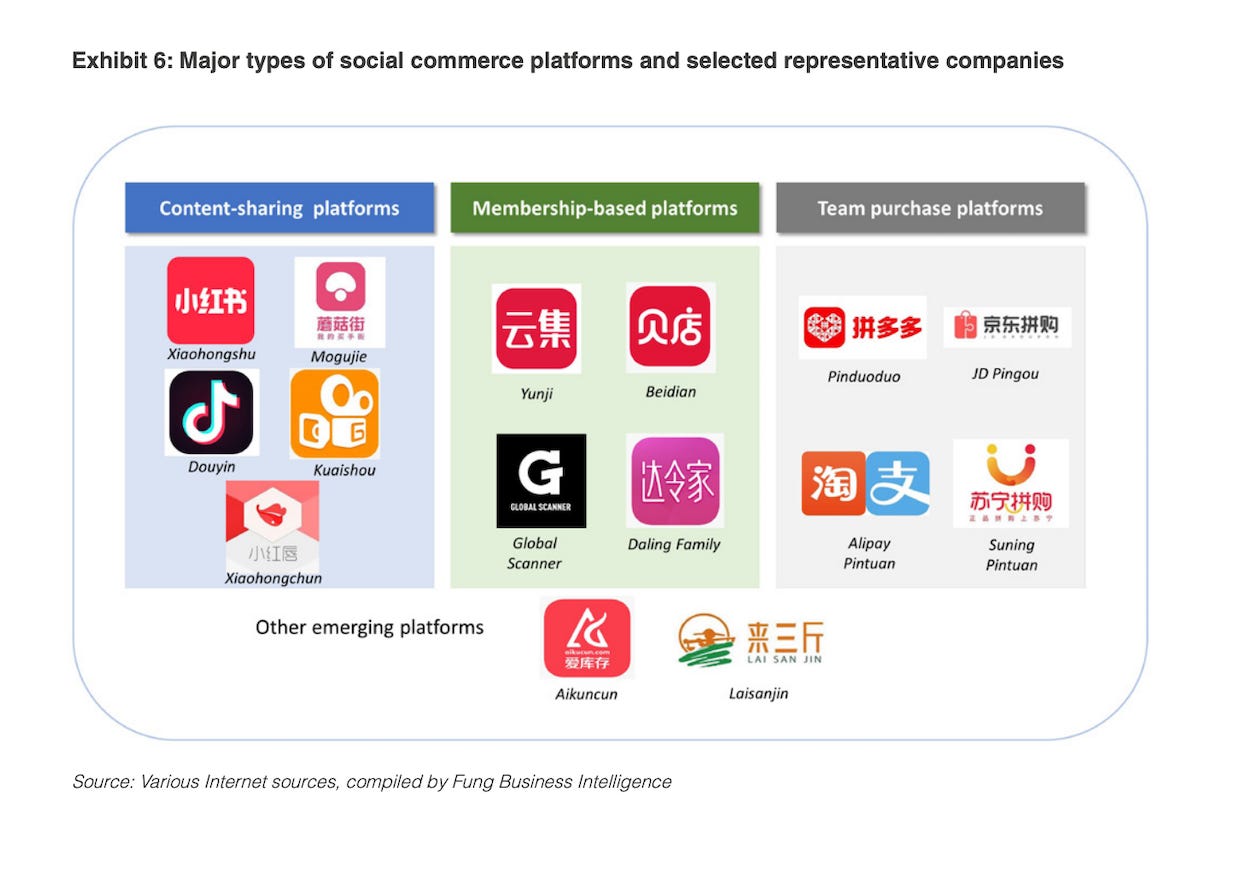
1. Content sharing platforms (with advanced commerce features)
2. 'Membership platforms' that adopt an S2b2C approach—the report gives the example of Yunji, which sources products directly from suppliers/ brands (S) and sells to micro-store owners (b) on its platform; micro-store owners then distribute the products to their social contacts, i.e. final consumers (C).
3. Group purchasing platforms with Pinduoduo, whose modus operandi we have already discussed.
Putting the "social" back in Western Commerce
To sum up, the Chinese social commerce ecosystem is simply more mature and structured. Replicating Chinese features into this ecosystem is not going to be easy, especially considering the Western culture and its deep-rooted influences.
However, alongside Facebook and Co., a particular ecosystem is emerging in the West. Its strength lies in socializing e-businesses by integrating social components. Ogilvy Asia details them in an article that brands should use as a checklist. Take a look at this list below:

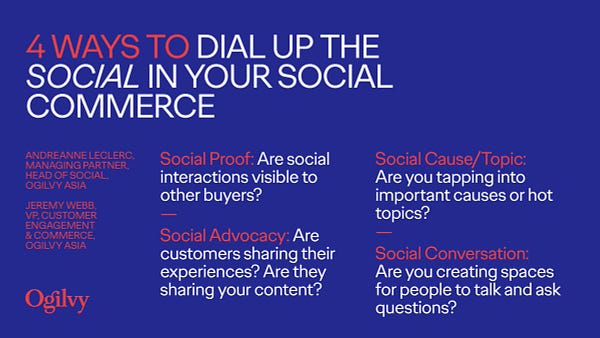
1. Social proof: are social interactions, especially comments, visible to other visitors? Are buyers able to see if their friends have bought the same product?
2. Social Advocacy: is the site facilitating sharing experiences between consumers? Is the content attractive enough for users to share it with their friends on social media?
3. Social Cause/Topic: are the products and content related to important causes or hot topics? If the brand’s products are part of social debate, they will have more exposure because of technical algorithms.
4. Social Conversation: Is there space for people to talk about their preferences and experiences? Can they comfortably ask questions and get responses?
Some businesses have figured this out and I have mapped them around two big categories: entertainment, because entertainment is needed (especially in these dull times) group shopping: an essential, yet ignored, component of IRL shopping
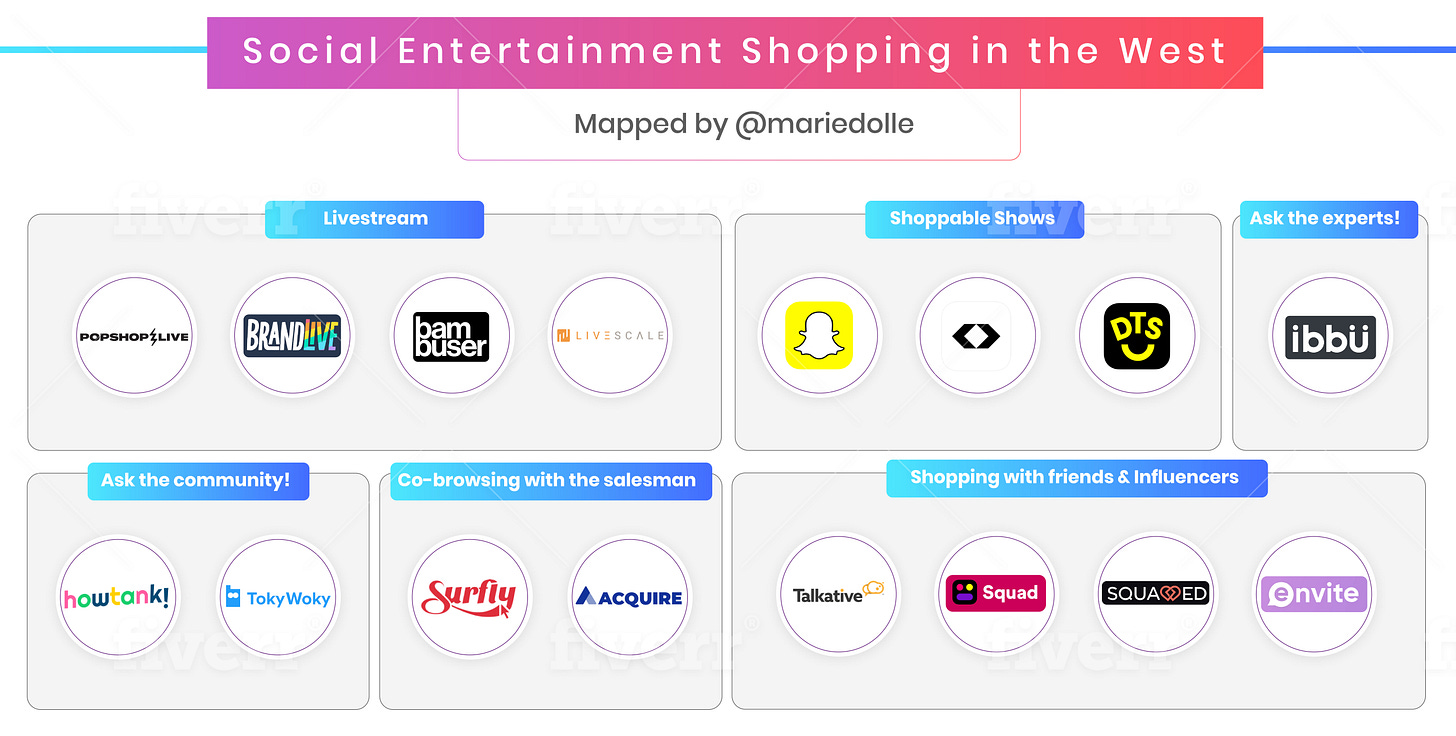
Collaborative google doc with all the links to these companies available here
Retail entertainment: live streaming solutions are emerging to support classic e-commerce platforms. Popshop Live, Bambuser, or LiveScale are popular examples. Livestream shopping offers two things that consumers need right now: entertainment, and a sense of community.


The Chinese livestream usages deserves to be observed. The Mayors of some communes are live-streaming via social platforms in a bid to promote local producers. This may be a bit clumsy, have questionable lighting and weird framing, but sincerity and integrity is unquestionable.
And people like it.
Some farmers from Shandong also held a live-stream where they gave more than 600,000 users a virtual tour of their farms. In addition, the government of the Nanchang province signed an agreement with Pinduoduo to launch a series of events as part of a live-stream festival. Yes, you read that right: A Live Stream Festival!
Online group shopping: this sector is particularly exciting and its main players can be divided into the following sub-categories:
C2C chats: Tools such as Howtank or Tokywoky offer among other community services, chats integrated into your e-commerce site so that you can ask questions to other people who are simultaneously browsing.
Expert recommendations: The Ibbü site allows specialists to communicate their expertise to consumers in need of advice when shopping online (and get paid for it!). This is another new development that signifies more potential.
The digitization of the seller's service for real online support: Video co-browsing solutions such as Surfly and Acquire are gaining momentum. I discovered this concept via USA’s Suitsupply site, where you can chat with vendors whose photos are displayed. This helps to humanize the site and the brand. In addition, you can also enjoy a live video chat while benefiting from the advice of an expert sales advisor. This process is entertaining and creates a strong human bond because it closely imitates a real shopping experience.
The rise of "shoppable shows" (Will the future of shopping be on Netflix, Amazon Prime Video, and Disney Plus ?): Snapchat has announced its plans for the future and this is proof that the app has understood the need to make community interaction the heart of social commerce. Working a lot around AR, Evan Spiegel's platform should soon offer distinct AR shopping experiences. This could further boost friendly interaction between buyers and thus encourage the social component within shopping. An idea we could possibly see soon is sharing AR outfits with friends so they can try it on.
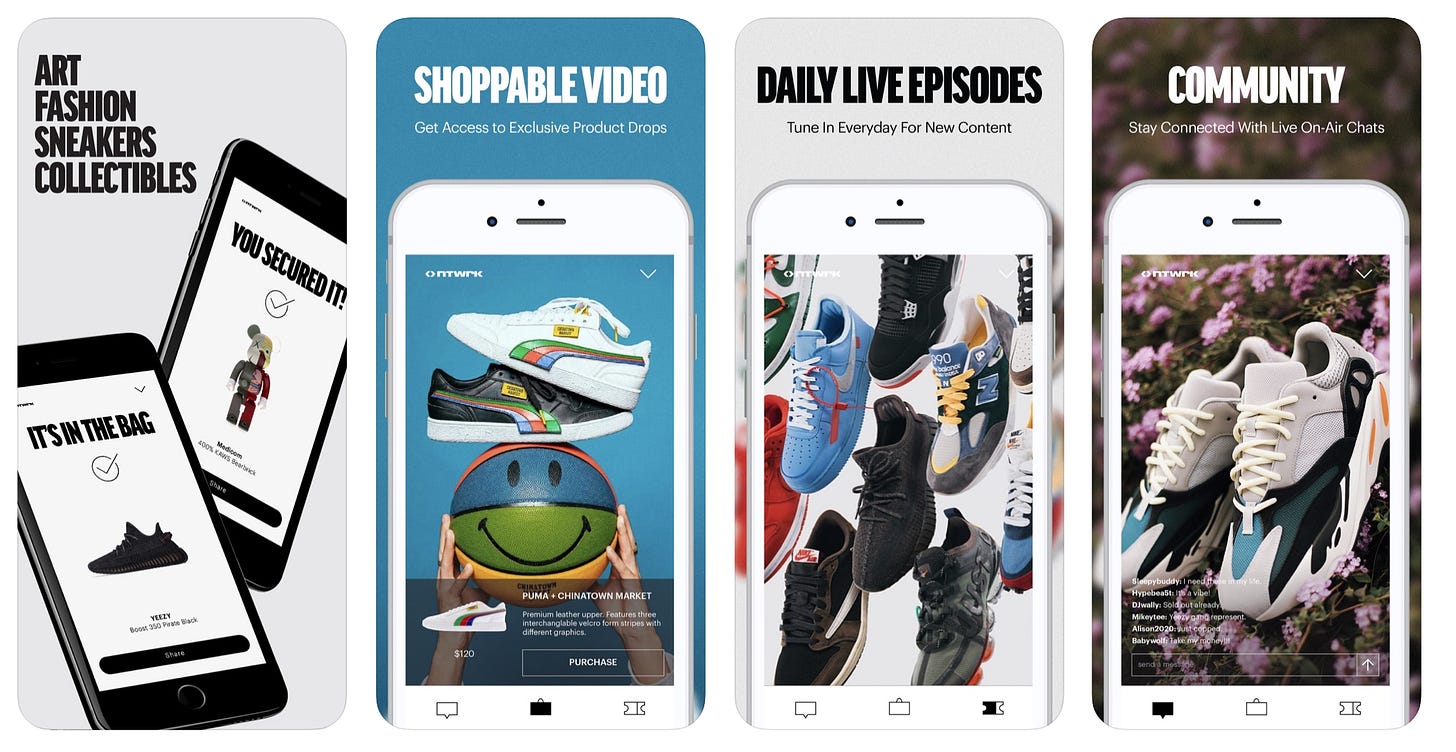
Image : NTWRK - Shop Exclusive Drops
Shopping with friends is a perfect translation of the IRL shopping experience: Squad, Squadded, Envite... many specialized apps are emerging in this field. One of my favorite is Envite, a plugin that REALLY wants to socialize the act of buying: group chats with polls for your friends to help you decide what to choose, private marketing events, influencer forums etc.
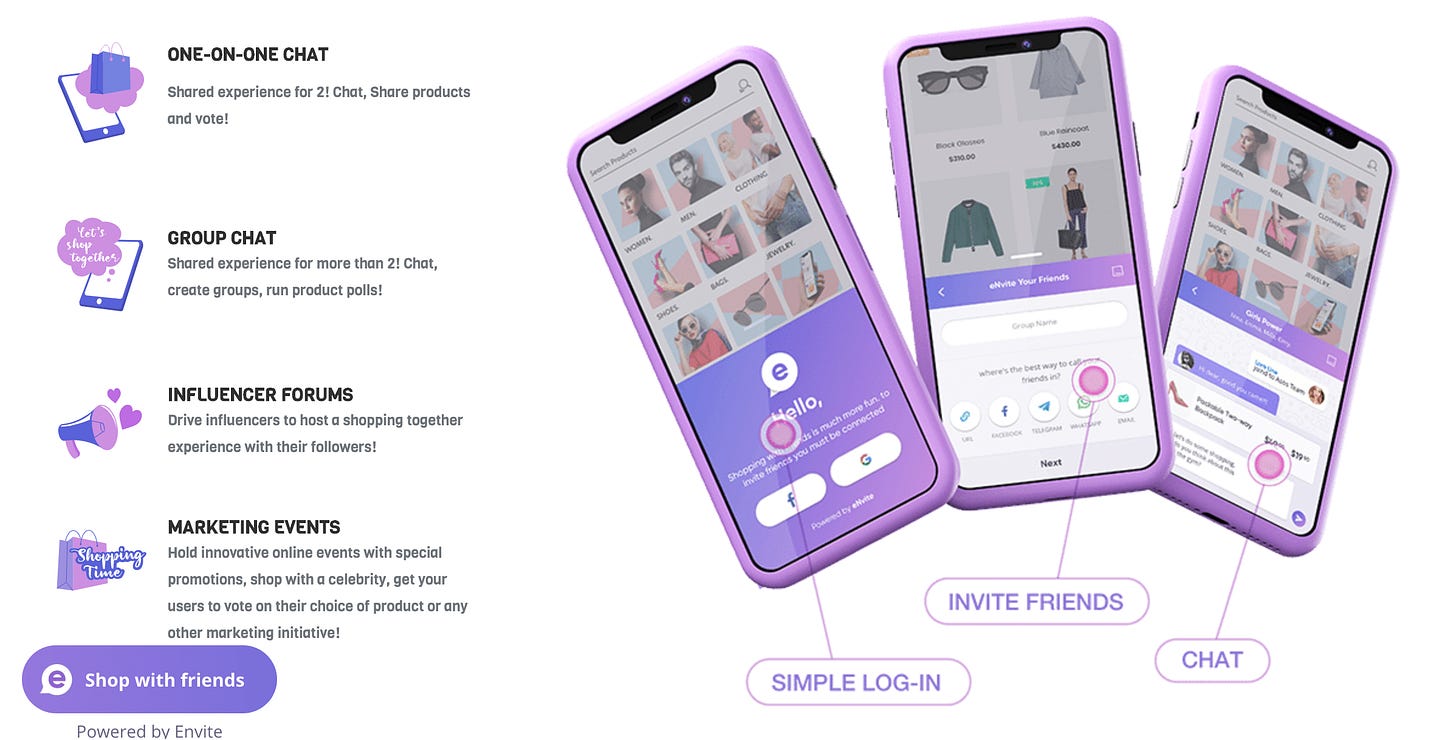
This development of new tools is rooted in the increasing number of high-quality e-commerce sites, with great content, UGCs, social proof (there are no-code tools such as Cavako, Scaleversion, Wiser ) and rating systems. In short, places for exchange and interaction where we could stay for hours... just like shopping at a mall in real life. What does tomorrow hold? Not only AR and VR for extremely playful and addictive experiences, but also social “phygital” commerce. You can expect the lines between online and offline shopping to blur further.
Let's go back to my initial question: where has the “social” gone? It's fragmented and distributed all over. As I've already told you, this is the advent of "social by design", which has become the main feature of the Western model.
I'm not saying that Facebook and Co. are not capable of putting the “social” back in the centre; I'm just saying that social commerce is no longer in their exclusive control. Will brands really want to invest massive amounts of money on platforms they don't own, platforms with obscure algorithms where you often have to pay to play? I doubt it. What’s the future of the West, then? Back to owned media and retail entertainment but in a totally different way: the show is just starting!
Marie Dollé








I worked for Curalate for over a year and left back in May. They're a Social Commerce platform that helps ecommerce + retail brands sell through their Social content - mostly UGC or user-generated-content. They were acquired by Bazaarvoice about 3 weeks ago. Interesting how the Chinese market is already onto selling through Video content on Social. This will be a thing soon in US and definitely interested in seeing who becomes the main player and whether it will be a platform for consumers to shop on rather than a software used by brands to drive revenue. Or both.
Really fascinating article, interesting that the Chinese ecosystem seems to be so far ahead of the Western one. I wonder what you make of https://theshopfront.tech, a new startup to integrate video and livechat as part of the actual shopping platform, not quite "social" selling but along the same lines...